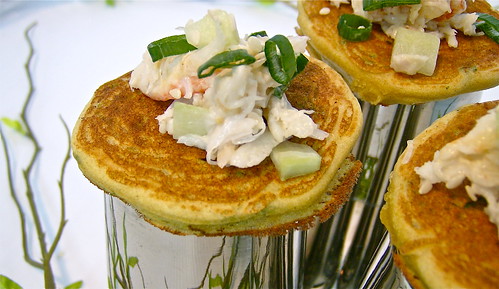Everyone knows someone with food allergies. From rashes to anaphylaxis, their effects range from mild to severe. Earlier this year, I was diagnosed with an autoimmune allergic disorder triggered by food and drug allergies. Autoimmune allergic disorders cause chronic health problems and long-term damage to the body’s organs and tissues when triggered by allergens.
Along with the joint pain, digestive troubles, foggy thinking and rashes I had, I was hypersensitive to items I had eaten and used my entire life, including tree nuts, milk and gluten-containing products. Even though I wasn’t even allergic to any of these particular proteins, they made me very sick.
Though the disorder shares the same effects as true allergies–as well as Celiac disease, including the associated intestinal damage and nutrient malabsorption issues–controlling the condition has allowed me to slowly reintroduce most of these foods into my diet. Any accidental exposures to my allergy-triggers, however, can spiral me right back to where I started.
Because my diet changed suddenly–and because the effects of the disease were burdensome at the time–I quickly gained much insight into what to do and not do. I worked with an amazing immunologist whose advice helped me get over the substantial challenge of eliminating a large chunk of my diet. Here are the three top pieces of advice that helped me best understand my autoimmune allergic disorder and take control over my health. I hope they will make your coming New Year easier.
“Cheating” can kill you: if not immediately, certainly sooner.
Food allergies send your body into attack mode, and whether it attacks the allergen or itself, it’s a physical stressor you just don’t need. “Cheating” on your diet is just a bad idea. If a person with Celiac disease eats gluten, he or she may feel no immediate effects, but that piece of bread triggers a process within the body that ends in damage to the intestines and the inability to absorb nutrients properly. Over time, those little exposures will exacerbate the condition, worsen the symptoms and put the person at risk for additional associated problems. It’s just not worth it. Instead, start familiarizing yourself with new foods, recipes and products that keep your tastebuds happy without sacrificing your health.
Allergy-friendly prepared products are helpful, but dietary variety is key.
There are tons of “something-free” snacks and mixes on the market right now that expertly mimic the taste and texture of things food-allergic people are unable to eat. They helped me adapt to my new food restrictions because they eased the transition. Over time, it became easier and cheaper for me to rely on a wider variety of whole foods to manage my diet rather than trying to get back what I thought I had lost.
I realized that it was silly for me to pine for snacks and condiments that represented just a fraction of my total dietary intake. I was just sentimental about a glass of milk and an Oreo and I didn’t need it; during the transition, the gluten- and dairy-free chocolate creme cookie made the situation seem less depressing and my life seemed more normal. So, go ahead and use them. Once you have your condition under control, you can adjust your overall diet plan to reduce your reliance upon them.
Now is the time for head games…with yourself.
I’ve read stories about people who embrace their allergies and consider them to be a trait that makes them unique or special. Anyone who knows me well will tell you I’m a cynic, and I’ll be the first to admit that I’m not always a glass-half-full kind of girl. When I found out about my disorder, I definitely felt sorry for myself. I mean, how is a chef going to do her job when she can’t even taste half of the dishes she makes without causing damage and discomfort? What is Christmas dinner without rolls and butter?
I had to dig deep and convince myself that this was a challenge because imagining myself in a competition motivated me and improved my outlook. I designed menus for clients that were absent anything I was allergic to without them ever knowing. I developed recipes for personal use that my kids liked, allowing us to eat together as a family. I started working with a local restaurant to develop a gluten-free fried seafood breading. I used these endeavors to convince myself that I was going to conquer my disorder, not by denying it, but by defying it. The difference between the two is the acknowledgement of its existence.
I developed a recipe for Buckwheat Pancakes while I was unable to eat gluten. The original recipe is gluten-free and you can replace the yogurt, milk and butter with a soy or rice-based substitute if you can’t eat dairy. The egg whites can be replaced with an egg substitute such as Ener-G. This recipe makes a light and fluffy pancake your entire family will love.
Whatever attitude or strategy you adopt, you can keep control over your food allergies with simple mindfulness and acceptance. Find a doctor you click with and educate yourself as much as possible. You’re more than your food allergies as long as your food allergies are under control, and the only person who can ensure that is you.
